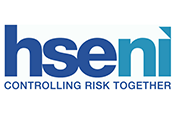Ensure lone workers' safety
Carry out a risk assessment for lone workers
Your health and safety risk assessment should cover all potential risks and hazards in your business. This covers risks faced by everyone who is in contact with your business, including you, your employees, contractors, clients, suppliers and other visitors to your workplace. It also includes the families of people who work for you from home.
Particular risks to lone workers
The risks faced by lone workers can differ from those faced by others. Use lone working risk assessment checklist.
The actions you take as a result of the risk assessment may also need to be different for lone workers. For example, lone workers cannot easily ask more experienced colleagues for help with dangerous tasks or equipment, so extra training may be required.
Your general emergency procedures may not be enough to protect the health and safety of lone workers. For instance, getting first-aid treatment may be more difficult for an injured lone worker working off-site than for on-site workers.
Contact procedures
Contact procedures are crucial. How will you enable a lone worker to stay in touch with colleagues or with back-up in case of security risks? For example, what procedures would be followed if there was a break-in while only one night guard was on duty? See security for lone workers .
- HSENI Helpline0800 032 0121
